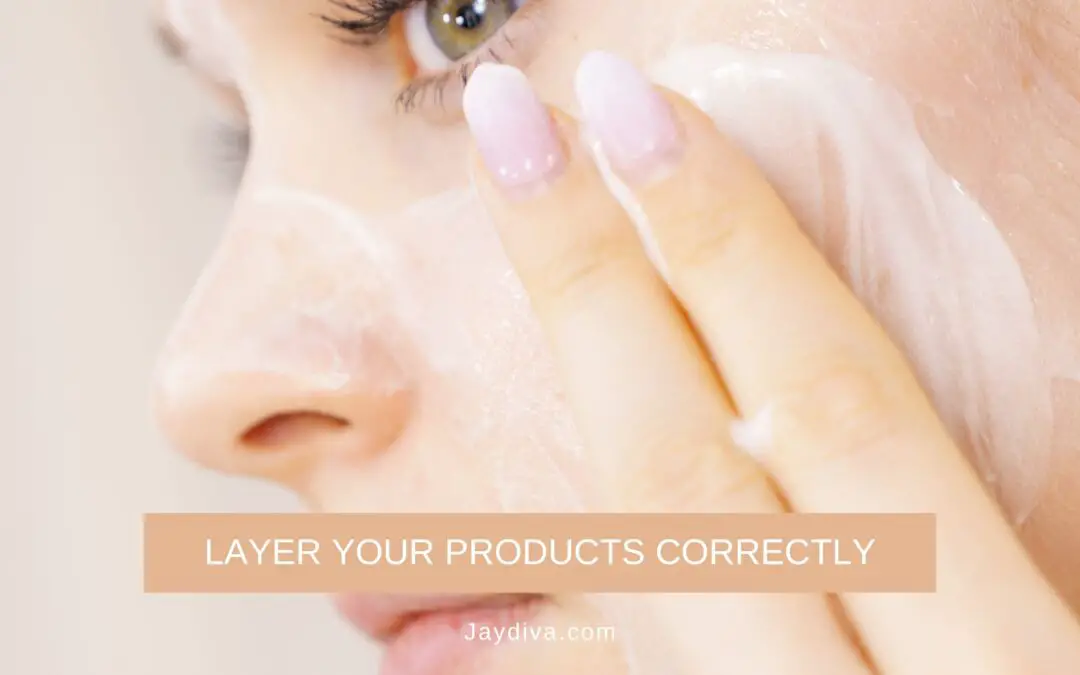Whether you’re a skincare novice eager to build your first routine or a seasoned enthusiast looking to optimize your regimen, understanding the art of layering is crucial. In this blog post, we’ll dive deep into the benefits of layering, ensuring that each product you apply works in harmony with others for maximum effect.
So, please grab a cup of coffee, tea, or your favorite beverage, and let’s begin your journey to clearer, more radiant skin through the strategic layering of your skincare products.
Table of Contents
How To Layer Your Skincare Products The Right Way
Understanding and implementing a layered skincare approach is not just about using multiple products; it’s about using them wisely. This ensures that each part of your skincare regimen supports the others, leading to healthier skin and better results.
Why Understanding Your Skin Type is Important for Proper Layering
Understanding your skin type is crucial for several reasons. First, it allows for personalization in your skincare routine; knowing whether you have oily, dry, combination, sensitive, or normal skin helps you select products that are specifically tailored to your needs, enhancing their effectiveness.
Second, using the right products can prevent skin issues such as breakouts in oily skin or irritation in sensitive skin, thereby avoiding exacerbation of problems.
Lastly, choosing products that are suited to your skin type leads to greater efficiency in your skincare regimen, allowing you to see better results more quickly and make the most of your skincare investments.
Also Read: 3 Really Simple Ways To Determine Your Skin Type
The Basics of Skincare Layering
General Rule of Thumb: From Thinnest to Thickest Texture
The fundamental principle behind skincare layering is quite straightforward: apply products from the thinnest to the thickest texture. This method is rooted in the way products are absorbed into the skin. Lightweight, water-based products, which typically have thinner consistencies, should be applied first because they absorb quickly and deeply. Thicker, creamier products should be applied last as they help to seal in the earlier layers and add additional moisture or treatment benefits on top.
Importance of Allowing Time for Absorption Between Layers
Patience is key when layering skincare. It is vital to allow each product to be fully absorbed before applying the next. This prevents products from merely sitting on top of each other, which can reduce effectiveness and hinder the intended benefits of each layer. A good rule to follow is to wait about a minute or until the skin feels dry to the touch before moving to the next product.
Role of Water-Based vs. Oil-Based Products
Understanding the difference between water-based and oil-based products is essential for effective layering. Water-based products are typically lighter and should be applied before oil-based ones. This is because water-based products absorb into the skin more easily and deeply, providing hydration and delivering active ingredients.
On the other hand, oil-based products have larger molecules and create a barrier on your skin. They are designed to lock in moisture and the benefits of the products applied before them.
For example, you might start with a light serum or essence (water-based), follow with a hydrating gel (still water-based but slightly thicker), and finish with a nourishing night cream or facial oil (oil-based) to seal in all preceding layers.
Pin For Later
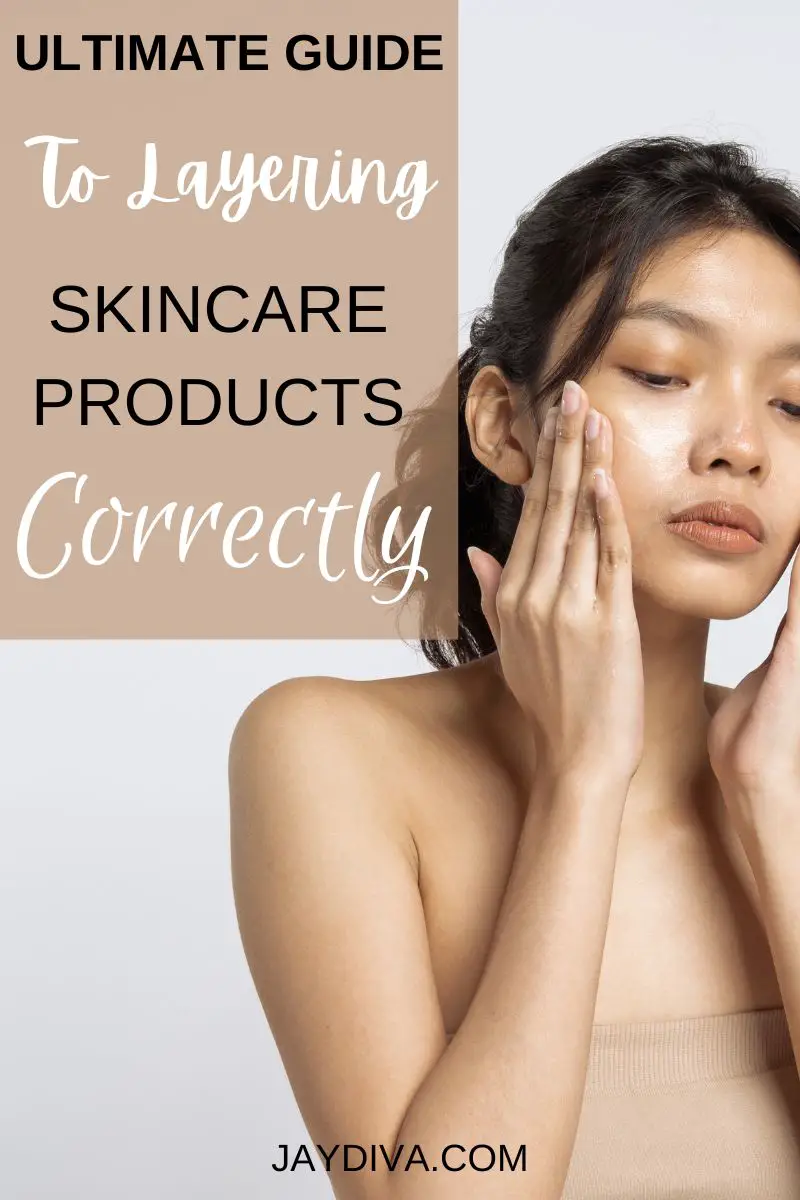
Step-by-Step Guide to Layering Skincare Products: Morning Routine
Here’s how to layer your morning skincare products effectively, keeping in mind the importance of choosing products that are suited to your skin type.
Step 1: Cleanser

Start your day with a clean slate by using a cleanser that matches your skin’s needs. For oily skin, a foaming cleanser like La Roche-Posay Effaclar Purifying Foaming Gel helps control oil without over-drying. If you have dry skin, Cetaphil Gentle Skin Cleanser provides hydration while cleansing. Those with sensitive skin might prefer a soothing formula like Vanicream Gentle Facial Cleanser.
Step 2: Toner
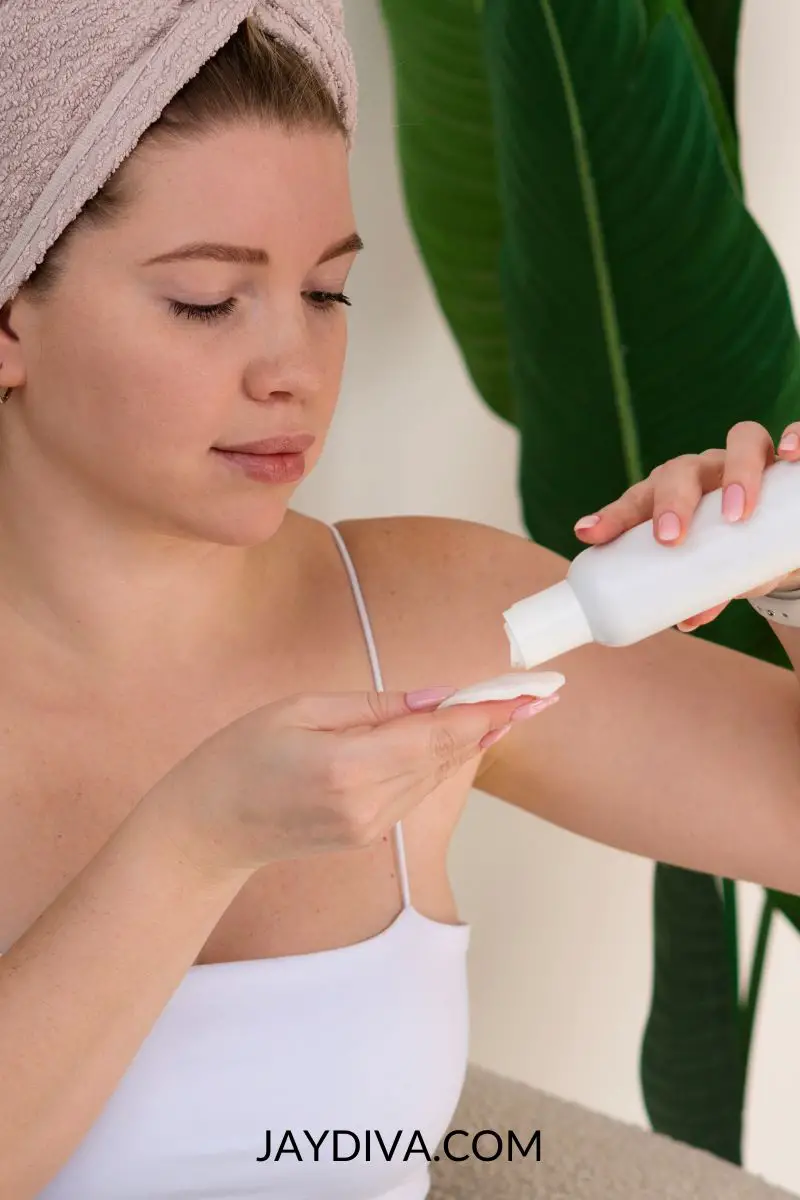
Toners can help refine pores further and restore your skin’s pH balance after cleansing. For the morning skincare routine, it is a better practice to use nourishing toners devoid of skin actives and leave those with these ingredients for the evening skincare routine when the skin is not exposed to sunlight.
A hydrating toner such as Kiehl’s Ultra Facial Toner works well for all skin types. A gentle, alcohol-free option like Paula’s Choice’s purely natural refreshing toner enriched with chamomile and green tea is ideal for sensitive skin.
Step 3: Serums

Serums are concentrated formulations designed to target specific skin concerns. For your morning routine, you would want to look out for serums that are antioxidant-rich, like the Paulas Choice antioxidant serum.
Also, consider incorporating a Vitamin C serum like Naturium vitamin C serum, which is great for all skin types for brightening and protecting against environmental damage that can leave our skin prematurely aging.
For dry skin, Hyaluronic Acid serums like The Ordinary Hyaluronic Acid 2% + B5 offer deep hydration, while oily skin can benefit from Niacinamide serums like The Good Molecules Niacinamide serum to control sebum and minimize pores.
Step 4: Eye Cream
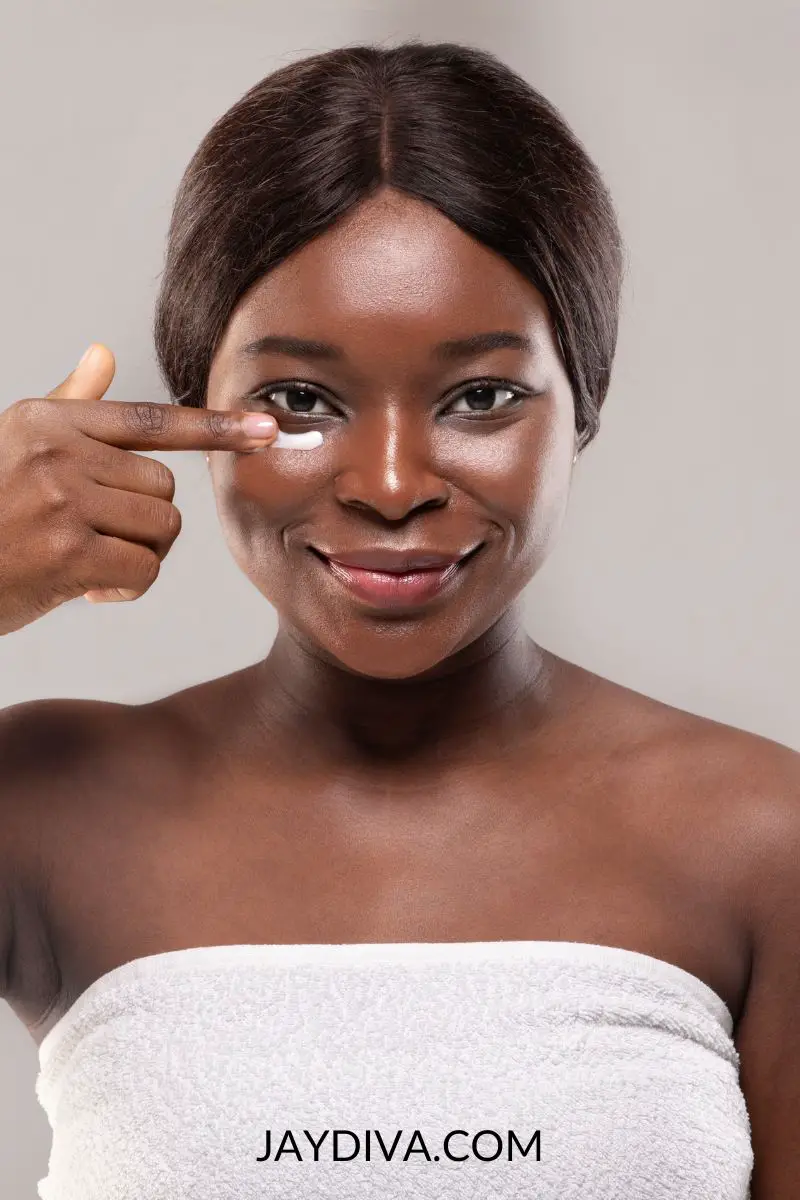
The eye area requires special attention; use an eye cream that caters to your concerns. Caffeine-infused eye creams like The Ordinary Caffeine Solution 5% + EGCG are effective for combating puffiness and dark circles. For dry and aging skin, look for eye creams with peptides and hyaluronic acid, such as Olay Regenerist Eye Lifting Serum, to hydrate and firm the skin.
Step 5: Moisturizer
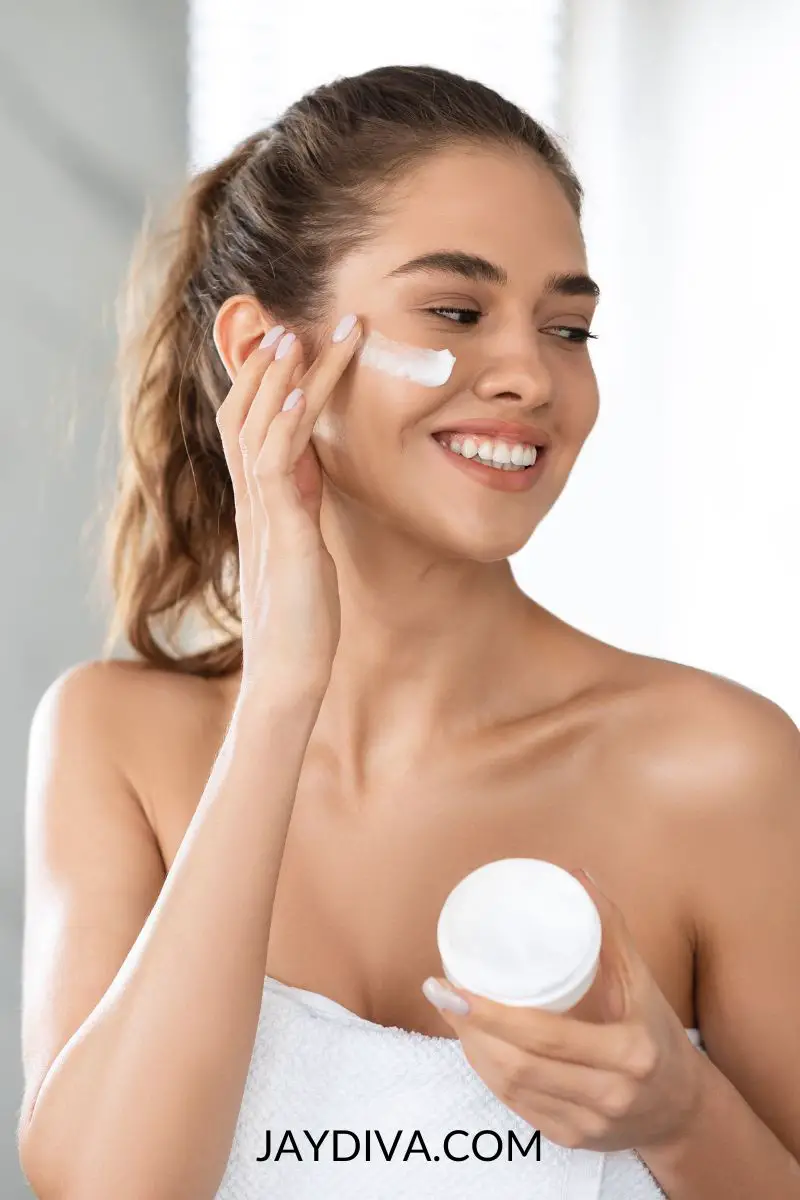
A good moisturizer locks in all the products applied beforehand. Oily skin should opt for lightweight, oil-free moisturizers like the COSRX oil-free ultra-moisturizing lotion. Dry skin types would benefit from richer creams such as the Pyunkang Yul Moisture Cream. For sensitive skin, a fragrance-free and calming moisturizer like the DearKlairs Rich Moist Soothing Cream keeps skin smooth and hydrated.
Step 6: Sunscreen
Sunscreens should be the last step in your morning skincare routine regardless of skin type. They are essential in protecting the skin for obvious reasons, as the sun is the leading cause of skin aging. You want to pick a broad-spectrum SPF of at least 30. The EltaMD UV Daily broad-spectrum SPF 40 is excellent for dry skin. I particularly like the Supergroup Unseen sunscreen for those with oily skin, which gives a matte finish that helps prevent shine.
Pin For Later

Step-by-Step Guide to Layering Skincare Products: Evening Routine
Your evening skincare routine should be packed with reparative ingredients, as the evening is when the skin naturally rejuvenates itself.
Step 1: Double Cleanse
Begin with an oil-based cleanser to dissolve makeup, sunscreen, and sebum buildup. For oily skin, try a lightweight formula like DHC Deep Cleansing Oil, which cleans without leaving a greasy residue. Those with dry skin might prefer a more nourishing oil, such as Kiehl’s Midnight Recovery Botanical Cleansing Oil.
Follow with a water-based cleanser—CeraVe Hydrating Cleanser is great for dry skin due to its moisturizing properties, while the COSRX low pH good morning gel cleanser works well for oily and sensitive skin, offering a thorough clean without drying the skin.
Step 2: Toner
As I said earlier in the morning skincare routine, the toning step in your evening routine can be geared towards targeting specific skin concerns and this can be interchangeable with the serum step. This means that if you have used a toner with skin actives, you can skip the serum step altogether or use a calming or soothing serum instead.
Choose an alcohol-free toner such as the Belief aqua bomb hydrating toner for all skin types, which soothes and hydrates the skin without irritation. For those targeting specific concerns like aging or brightness, a toner like the Good Molecules exfoliating toner can be beneficial, and those with acne-prone skin dealing with post-acne marks can try this toner also by Good Molecules- The niacinamide brightening toner.
Step 3: Exfoliant
This step is where you incorporate your heavy-weight exfoliants. Exfoliating 1-3 times a week is key to removing dead skin cells and promoting cell turnover. Like the other steps, you want to choose an exfoliant suited to your skin type to avoid irritation.
For oily and acne-prone skin, use a gentle exfoliant like Paula’s Choice SKIN PERFECTING 2% BHA Liquid, which unclogs pores without causing dryness. A milder product like The Ordinary Lactic Acid 5% + HA provides gentle exfoliation with added hydration for dry or sensitive skin. The Cerave skin renewing nightly exfoliating treatment incorporates AHAs, ceramides, and hyaluronic acid and is geared toward aging skin.
Step 4: Treatment Serums or Spot Treatments
This serum step is another opportunity to infuse skin-rejuvenating treatments in your evening skincare routine. This is where you would want to bring in your retinoids and potent skin treatments.
Retinol serums, such as the Cerave skin-renewing retinol serum, are excellent for anti-aging. If you’re dealing with acne, you may want to try an adapalene gel. The Topicals faded brightening, and clearing serum is a great choice for hyperpigmentation and dark spots. If dryness and dehydration are your concerns, then a hyaluronic acid serum like the Cerave hyaluronic acid serum could be what your skin craves.
Step 5: Eye Cream
Nighttime eye creams can be richer and more nourishing than their daytime counterparts. Look for ingredients like peptides, vitamin C, and hyaluronic acid for anti-aging, like the Paulas Choice C5 super boost eye cream.
Patting a small amount around the eye area can help reduce the appearance of fine lines and refresh tired eyes. Neutrogena Rapid Wrinkle Repair Eye Cream works well for most skin types. If dryness is a concern, look for richer formulations such as Clinique Smart Clinical Repair wrinkle-correcting eye cream, which provides intensive moisture.
Step 6: Night Cream or Sleeping Mask
Lock in all your treatments with a hydrating night cream or a sleeping mask. Sleeping masks are an excellent option for all skin types as a once-a-week treatment to deeply hydrate and restore the skin. CeraVe Skin Renewing Night Cream is fantastic for dry skin, providing lasting hydration and restoration. Oily skin might benefit from a lighter formula like Laneige Water Sleeping Mask, which hydrates without feeling heavy.
Step 7: Face Oil
This is an optional step. For an extra layer of nourishment, consider adding a face oil. This step is particularly beneficial for dry or aging skin, as oils can provide essential fatty acids and vitamins.
Apply a few drops over your night cream or mix them directly with the cream for enhanced hydration. Those with dry skin might enjoy the Ordinary 100% Organic Cold-Pressed Rose Hip Seed Oil, which is rich in fatty acids. For oily skin and lighter oils like squalane, the Biossance 100% squalane oil absorbs quickly and won’t clog pores.
Common Mistakes in Skincare Layering
When it comes to skincare, more is not always better, and understanding the right way to layer products is crucial for achieving the best results without harming your skin. Here are some common pitfalls to avoid in your skincare routine:
Combining Incompatible Ingredients
One of the trickiest aspects of skincare is knowing which ingredients work well together and which do not. For example, using retinol and vitamin C together can irritate the skin because both are potent and can disrupt the skin’s pH balance.
Similarly, applying benzoyl peroxide with retinol can deactivate the retinol, reducing its effectiveness. Learning about the active ingredients in your skincare products and how they interact can save you from unwanted reactions and ensure each product performs at its best.
Over-layering or Using Too Many Products
While it can be tempting to use multiple serums or treatments you believe will benefit your skin, over-layering can lead to issues. Too many products can overwhelm your skin, leading to clogged pores, breakouts, and increased sensitivity.
This happens because the skin can only absorb so much; beyond that, products can just sit on the surface, causing buildup. To avoid this, focus on a few key products that address your primary skin concerns and use them according to directions. This streamlined approach simplifies your routine, reduces waste, and saves time.
Not Patch Testing New Products
Every time you introduce a new product into your routine, there’s a risk of an allergic reaction or irritation, especially if you have sensitive skin.
Patch testing—a method where you apply a small amount of product to a discreet area of your skin, such as behind the ear or on the inner wrist, and wait 24-48 hours to observe any adverse reactions—is a simple preventive measure.
This test can help you avoid severe allergic reactions and determine if a product is suitable for your face.
Pin For Later
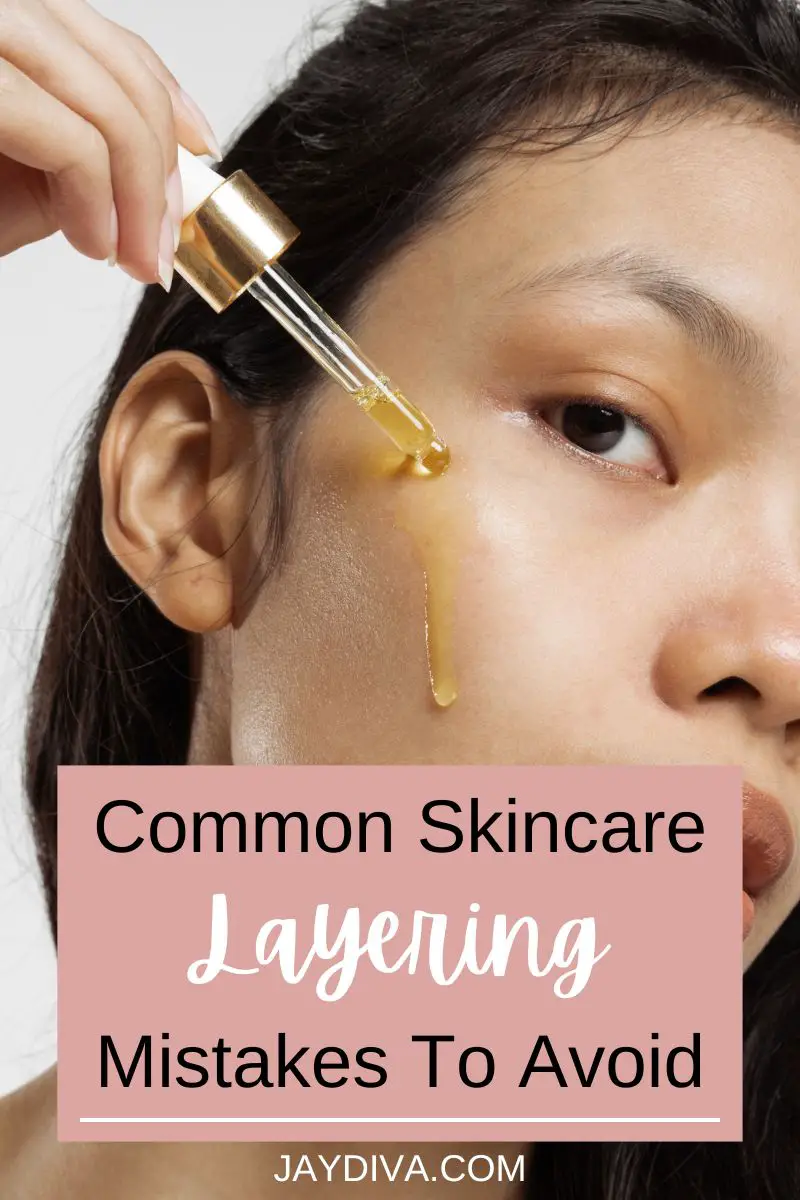
Tips and Tricks for Enhanced Effectiveness in Skincare Layering
Below are a few tips and tricks you can incorporate into your skincare routine throughout the year to ensure you are adequately layering your skincare products and providing the much-needed nutrients to your skin
Tailoring Your Layering Routine to the Seasons
As the seasons change, so do your skin’s needs. In the colder months, your skin might crave more hydration due to dry indoor heating and harsh outdoor weather. Incorporating richer moisturizers and hydrating serums can help combat dryness.
Switching to a heavier night cream while keeping a lighter day moisturizer for oily or combination skin types can balance the need for extra moisture without causing breakouts. During the warmer, more humid months, lighter and more water-based products are preferable to prevent clogging pores, especially for those with oily skin. Adding in an astringent toner or switching to a gel-based moisturizer can help manage excess sebum production.
The Impact of Water Temperature on Product Absorption
The temperature of the water you use to wash your face can affect your skin’s health and the efficacy of your skincare products. Hot water can strip your skin of its natural oils, leading to dryness and irritation, while cold water might not effectively remove oils and residues.
Lukewarm water is ideal as it cleanses effectively without stripping moisture. After cleansing, the slight dampness of the skin can also help in better absorption of products like toners and serums, making them more effective.
The Benefits of Occasionally “Skin Fasting” or Minimizing the Routine
Sometimes, less is more when it comes to skincare. “Skin fasting,” or minimizing your routine, involves reducing the number of products you use or occasionally skipping your skincare routine to allow your skin to reset and regain its natural balance. This can be particularly beneficial if you notice your skin becoming overly reliant on certain products or if you’re experiencing irritation and congestion.
During these periods, scaling back to just cleansing and moisturizing can help your skin’s barrier repair itself and regulate oil production naturally, which is beneficial for all skin types. This practice also helps you identify which products are truly beneficial for your skin and which ones might be superfluous.
Final Take Home
Remember that the key to an effective regimen lies in understanding and respecting your skin’s unique needs. Each step you take should be tailored to nurture and protect your skin.
By layering your products correctly—from the thinnest to the thickest, and by carefully selecting each item according to your skin type, you ensure optimal absorption and efficacy. Embrace these practices, be patient with your skin, and watch as it transforms, becoming more radiant, healthy, and resilient daily.

